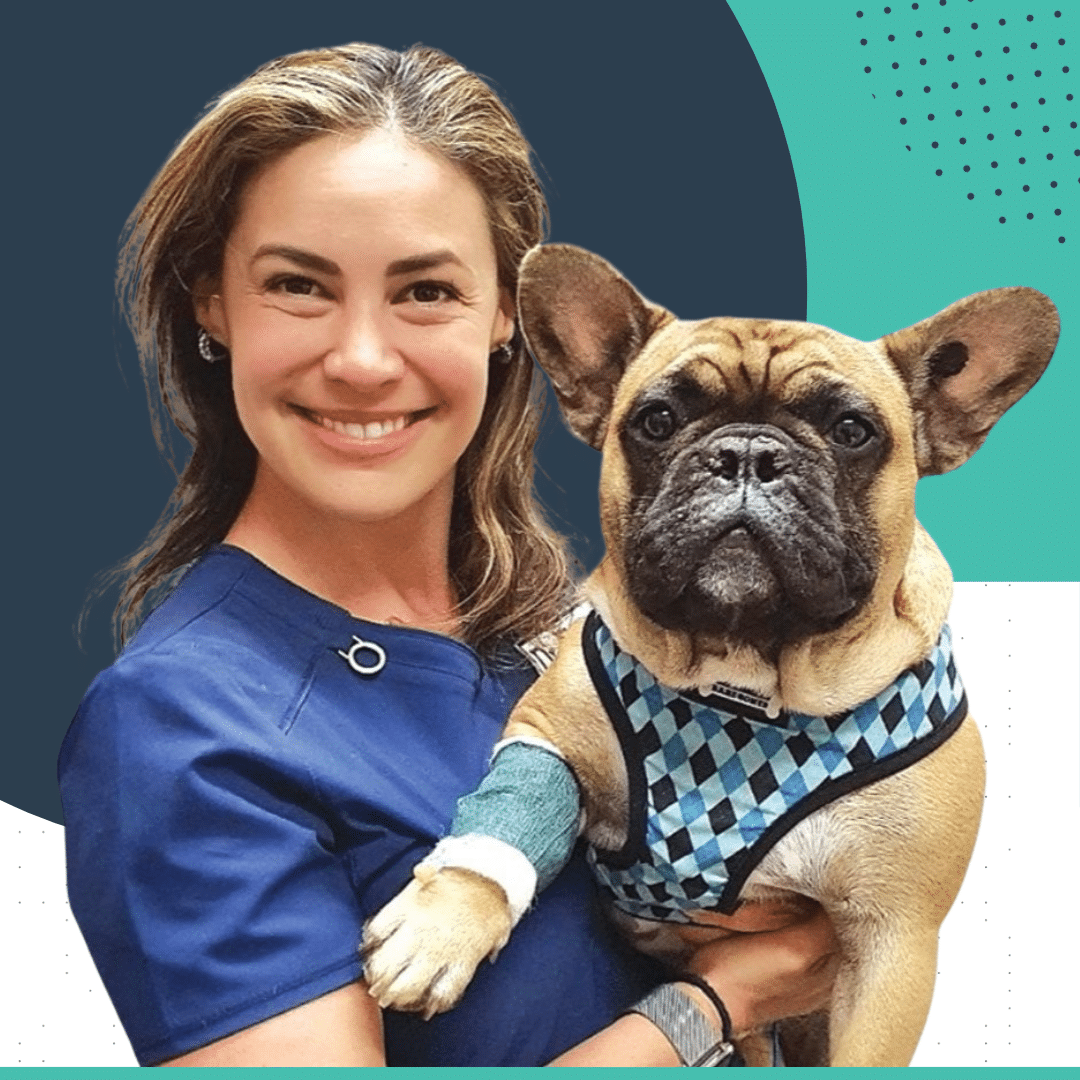Brachycephalic for Life: Clinical Management Strategies
24/7 access for the lifetime of this course

Brachycephalics are fun, yet they’re also high-risk patients in almost every sense. You could say they’re the poster children for anaesthetic complications, gastro-oesophageal disease, skeletal issues and, obviously, respiratory compromise. What extra precautions do you take to manage these patients?
Every clinician has an opportunity to improve the welfare and quality of life of brachy patients – if the client allows us.
This 6-module On-Demand course shows you how.
While this CE was created primarily for general practice vets, we warmly welcome veterinary nurses and technicians who wish to build their knowledge and confidence in this area.
Brachycephalic obstructive airway syndrome (BOAS)
BOAS is a chronic, lifelong and inherited disorder of brachycephalic breeds. In the long term, it is hoped that conscientious breeding will improve the welfare of these patients. In the short to medium term, the veterinary industry is forced to meet a range of social, surgical and medical challenges to help these animals survive.
This online course prepares general practice and referral hospital veterinarians to coordinate and manage brachycephalic cases, including owner education, surgical case selection, anaesthesia and preoperative care, recovery and discharge, and long term control.
It’s not just the airways…
If a brachy is booked to see you, it’s a reasonable assumption that it’s got an obvious issue like heat stress, exercise intolerance or respiratory collapse. Yet aside from the well-known respiratory issues and sensitivity to heat, brachies can present with other life-limiting issues such as gastro-oesophageal reflux, hiatal hernia, skin disease, a tendency to develop corneal ulcers and MSK issues like luxating patellae, screw tails and hemivertebrae.
These are complex patients.
As a clinician in charge of any difficult case, you also need to be alert to subclinical disease and the likely progression of brachy-specific medical issues. Early intervention and supportive care can make a significant difference to your patient’s quality of life.
Important: this course covers medical and surgical aspects of brachycephalic care, but it is not a guide on how to perform specific airway procedures.
-
24/7 ACCESS FOR THE LIFETIME OF THIS COURSE
-
FLEXIBLE CPD WHEN YOU WANT
-
DOWNLOADABLE NOTES
-
CERFITICATE UPON COMPLETION
-
MOBILE FRIENDLY INTERFACE
Brachies need veterinary support
- Understand how you can make a difference
- See what gains you can achieve in primary care
- Planning airway surgery in-house
- Hear the evidence for change
- Get access to reliable resources
Get a handle on BOAS
- Making welfare your priority
- Controlling risk while the patient is in the clinic
- How to suggest surgery if it’s indicated
- Reducing the potential for lifelong suffering
- Why timing is everything
Course Modules
BONUS MODULE – BOAS is a Major Health Issue
Most of us are familiar with respiratory disease and heat stress in brachycephalics. But early in life, there are other serious and subclinical health issues. Do you know what to look for?
This introductory module outlines why BOAS should be a major concern for you in GP or referral practice, both in terms of patient welfare and because of the clinical risk they carry. It’s a delicate topic. We introduce how to talk to your clients about BOAS, red flags for the highest risk patients, and how to go about case selection for surgery.
Module 1 – Perioperative Risks
Brachycephalic breeds are head shy, highly strung and highly bonded to their owners. Many brachy dogs experience spontaneous regurgitation, and some pets (and their owners) take stress and separation anxiety to epic levels. This is not an anaesthetic patient to take lightly, and the stakes are highest when you’re the one responsible for surgery and anaesthetic safety. This module outlines why a standard perioperative protocol lacks the scope to protect a brachycephalic heading to surgery.
- How a stressed patient sabotages its own recovery
- Using previsit pharmaceuticals (PVPs) to improve patient safety
- Regurgitation & aspiration risks
- The role of antacid therapy in your perioperative plan
Module 2 – General Anaesthesia
It’s been said that a pug’s best breathing is achieved through an ET tube. These patients can wait a long time before they’re ready to extubate – and fair enough!
Brachycephalic anaesthesia is a challenge. Add a long, thickened soft palate. Intubate past those swollen laryngeal saccules and engorged tonsils. Reduce your ET tube size to accommodate the hypoplastic trachea. There’s more.
- Preoxegenate, preoxygenate, preoxygenate
- Your guide to prompt & safe intubation
- Managing the airway during BOAS surgery
- Appropriate GA maintenance for patients with complex premeds
Module 3 – Airway Surgery
Airway surgery is a challenging and rewarding undertaking. Procedures covered include wedge resection, Trader’s, ala-vestibuloplasty, laryngeal sacculectomy, folded flap palatoplasty, free edge staphylectomy, H-pharyngoplasty, tonsillectomy, and temporary tracheostomy. With experience comes a set of life-hacks to reduce stress, improve outcomes, and reduce complications. This module is all about sharing the hard-won experience with you.
- How the order of procedures makes a huge difference to success
- Embracing common sense in surgical planning
- Setting up for airway procedures
- Local anaesthesia blocks
- Positioning of mouth gags, props & airway equipment
Module 4 – Recovery & Discharge
Taking a brachycephalic patient from admission to discharge is a success, but it requires keen observation, individual care and a lot of TLC! How do you feel about having the owner present for recovery?
- Owner-assisted recoveries reduce stress & complications
- Your obligations to the pet & owners
- Homecare instructions
- Preparing the owner for the postoperative period at home
- Helpful notes for your local emergency centre
Module 5 – Long Term Management & Pricing of BOAS Care
Brachycephalic pets often require significant financial commitment from their owners. The increased level of care they need can push up the cost of diagnosing and treating brachy-specific health issues.
- Helping owners to manage their pets at home
- Teaching owners to recognise warning signs
- Planning long term clinical care
- Pricing discussion for brachy-specific care
A VETPRAC COURSE YIELDS TANGIBLE BENEFITS
INVEST
Six modules of flexible online learning & $497 investment in your professional development
LEARN
Avoid the pitfalls & tailor your clinical care to brachycephalic patients
RETURN
Recognise & address BOAS cases, plus anaesthesia & perioperative care guide
Your Educator

Dr Ema Bowman
CHOOSE YOUR PAYMENT OPTION
ONE-TIME INVESTMENT
$497 AUD
PAYMENT PLAN
x 4 monthly instalments of $134
Your Questions Answered
What is “On Demand”?
How and when do I access learning materials?
How long is course access open?
You’ll have 24/7 access for the full lifespan of the course on the On-Demand platform, starting from the date of your purchase. Your access begins immediately and remains available for as long as that course stays active on the platform.
We’ve structured access this way because veterinary medicine moves fast, and our goal is to provide up-to-date learning materials to the VetPrac community. Our education team regularly assesses, reviews, and updates each course to ensure we’re offering only current and relevant information.
If a course is scheduled to be removed from the platform, you’ll receive six months notice.
